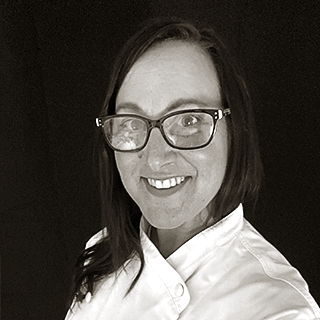Listen to This Article:
Behind every beautifully layered cake or picture-perfect macaron is a pastry chef who has spent years developing the skills, timing, and precision needed to deliver consistent results under pressure. While the job can be deeply rewarding, it’s also physically demanding, fast-paced, and rooted in science and structure.
Pastry chefs don’t just decorate desserts. They can plan production schedules, manage inventory, lead teams, troubleshoot recipes, and maintain strict sanitation practices, while balancing creativity with consistency.
In this article, we’ll explore what pastry chefs do daily, how their roles can vary depending on the setting, and what it takes to thrive in this challenging but fulfilling career.
Where Do Pastry Chefs Work? A Look at Three Common Roles
The day-to-day life of a pastry chef can vary widely depending on where they work. A pastry chef in a busy restaurant kitchen might spend their evenings plating elegant desserts during service, while one in a neighborhood bakery could be rolling dough before the sun comes up. By exploring a few common work environments, we can better understand what pastry chefs do—and how their responsibilities shift with the setting.
The Bakery or Pastry Shop Chef
In a bakery or pastry shop, the pastry chef’s work is a balance of volume and accuracy. They could be responsible for baking dozens of croissants, petit fours, Danishes, macarons, and other tasty treats. And each has to be just right, down to the size, shape, bake, and decoration.
Pastry Chef in French
A dessert chef is often called a pastry chef or a patissier. The term for “pastry chef” in French is “pâtissier” (for a male) or “pâtissière” (for a female). It’s derived from the word “pâtisserie,” which means “pastry.”
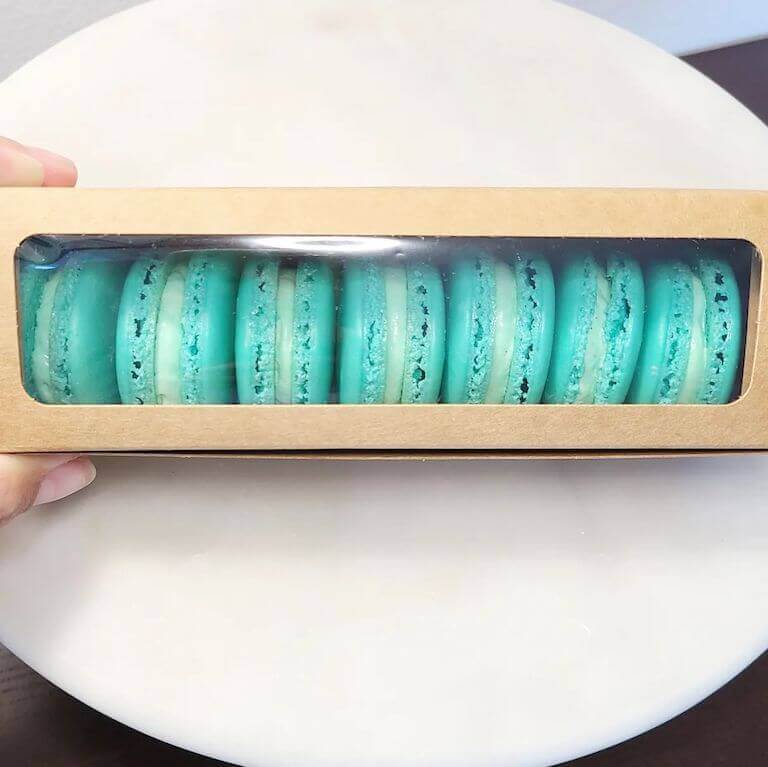
These blue vanilla macarons, made by Auguste Escoffier School of Culinary Arts graduate Amanda E., show the level of precision pastry chefs use when producing consistent, high-quality items in a bakery setting.
The pastry chef may have to arrive long before the first customer arrives to make sure the pastry case is well-stocked when the doors are open. That could require a wake-up time of 3:00 or 4:00 a.m. But fortunately, their days may also end in the early afternoon.
Some pastry chefs and bakers enjoy those early hours before the world awakens. There are no customers, no new orders, and nothing to distract them from their work.
The Specialty Pastry Chef
A specialty pastry chef often focuses on one or a few specific types of desserts or pastries. For example, they may work in a shop that only makes cannoli and other Italian desserts. Or they could make mini tarts, profiteroles, and other patisserie. They may also make pastries that fit into certain diets, like gluten-free or vegan pastries.
If a shop makes desserts rather than breakfast items, the pastry chef may work a more “normal” schedule since they may not expect an early morning crowd. The pastry chef’s day could begin at 8:00 a.m. in preparation for a midday opening.
But just like any other pastry chef, this job is highly focused on accuracy. French pastries, for example, are known for their elegance and uniformity. Each petit four should look identical to the next.
The Restaurant Pastry Chef
Unlike a pastry chef in a bakery or pastry shop, a restaurant pastry chef could be in charge of the restaurant’s entire dessert program. This could include making some items in advance, like chilled desserts, fruit sauces, pies and cakes, and chocolates. And it could also include working through dinner service alongside the rest of the kitchen crew.
Some restaurants have a larger pastry team, so the pastry chef could supervise a small team of pastry cooks who execute the menu. However, in smaller restaurants, pastry could be a department of just one or two, with the pastry chef responsible for prep and service. That can be a long day, but it may also allow for a lot of creativity, especially if the pastry chef gets to create daily or seasonal specials.
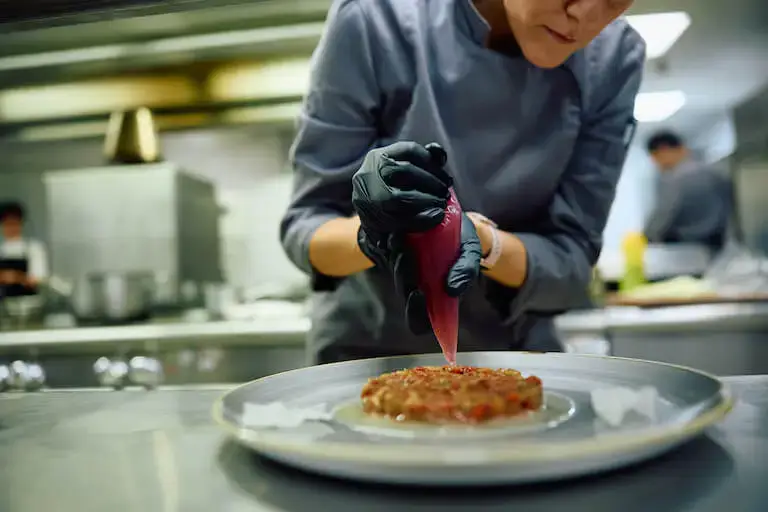
Restaurant pastry chefs often work during service, plating desserts with precision and coordinating timing alongside the kitchen team.
What Are a Pastry Chef’s Key Responsibilities?
As we’ve seen, the exact duties of a pastry chef can vary depending on their specific role and where they work. Their days may blend creativity with careful planning, hands-on baking, and plenty of behind-the-scenes tasks that keep the kitchen running smoothly.
Some of their key responsibilities may include the following.
1. Recipe Preparation & Baking
Recipe preparation and baking are the foundation of a pastry chef’s role. Accuracy is critical, and that starts with how ingredients are measured. Weight is often used in measuring instead of volume to ensure consistency across batches.
The mixing method also matters. Whether creaming butter and sugar, folding whipped egg whites, or whisking a batter, each technique affects the final texture. Over-mixing can make cakes dense or rubbery, while under-mixing might leave lumps or create uneven rise.
Temperature control and baking techniques are also critical. A few degrees too hot and croissants burn before they fully rise; too cool and they never flake properly. Pastry chefs must also adjust for outside variables like humidity, elevation, or dietary requirements, all of which affect how recipes perform.
In Escoffier’s Baking & Pastry programs, students begin with essential baking techniques and ingredient theory, giving them the scientific foundation to create and consistently recreate exceptional products.
2. Decorating & Presentation
Whether topping a fruit tart with fresh berries or finishing a plated dessert with a delicate sugar sculpture, pastry chefs use decorative skills to enhance flavor, elevate presentation, and support a business’s brand identity.
Piping, glazing, chocolate work, and sugar decorations all require practice and precision, especially in high-volume settings where consistency matters just as much as beauty.
In restaurants, pastry chefs pay close attention to balance and detail. Every element is arranged with purpose to create a polished, thoughtfully composed dessert.
3. Menu Planning & Recipe Development
Some pastry chefs play a hands-on role in shaping a restaurant’s dessert menu. They may work to create new recipes that are inventive and workable in a busy kitchen and test out seasonal ingredients. Or, they may tweak a recipe for gluten-free or dairy-free needs.
Recipe development refers to adjusting texture, sweetness, and structure, then recording precise notes so others can replicate the dish.
Beyond taste, a dessert must make business sense. That means calculating ingredient costs, portion sizes, and labor time.
4. Inventory & Ingredient Management
Behind the scenes of every beautiful pastry is an efficient system that keeps ingredients stocked, fresh, and accounted for. Inventory management is a critical responsibility affecting production flow and profit margins.
Pastry chefs may monitor ingredient levels, track shelf life, and place orders based on production schedules. That could mean ordering bulk flour for a week of croissants or sourcing specialty chocolate for a high-end plated dessert.
Storage plays a role, too. Ingredients like fresh berries, chocolate, and dairy require proper temperature and humidity control. A pastry chef needs to know the best way to keep ingredients at peak quality.
5. Sanitation & Organization
In any culinary job, you could spend almost as much time cleaning and organizing as you do cooking.
While pastry chefs aren’t usually working with raw meat or seafood, that doesn’t mean they don’t have to be diligent about sanitation and hygiene. Working with raw eggs, uncooked flour, and dairy can lead to cross-contamination if a pastry chef isn’t careful. Poor sanitation can cause people to get sick from salmonella, E. coli, and other foodborne illnesses or cause allergic reactions. So, pastry chefs are cleaning and washing their hands all day long!
A pastry school education emphasizes the importance of sanitation and organization. Before students dig into the complexities of cakes or the fun of French pastry, they may explore cleaning methods, ingredient storage, and the importance of mise en place.
Organization is a big factor. Pastry chefs are planners, and their workspace shows it. Everything they need is organized in front of them, probably in the exact order it has to be added to the recipe. Nothing is left to chance.
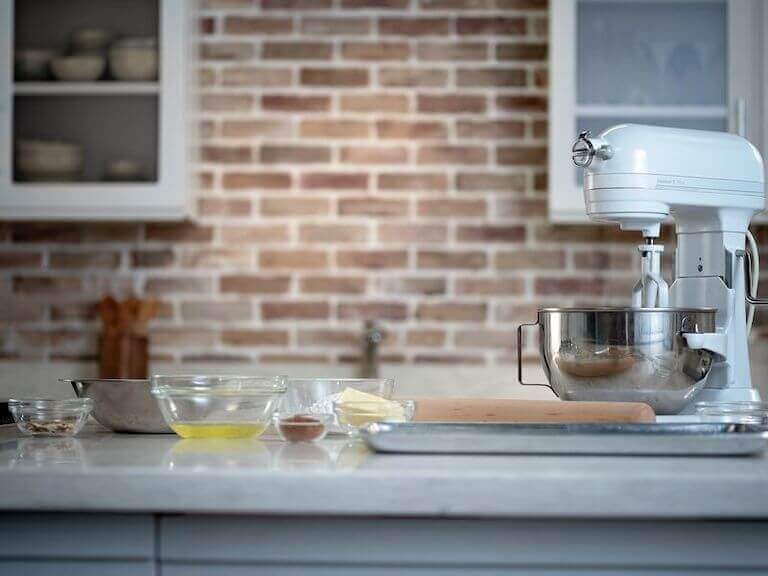
Pastry chefs rely on mise en place—organizing ingredients ahead of time—to maintain accuracy and efficiency during production.
6. Team Coordination & Communication
Pastry chefs may work solo in some settings, but in most kitchens, they’re part of a larger team. That means constant communication and coordination, especially when working in high-pressure environments like restaurants, hotels, or event venues.
For example, a restaurant pastry chef may need to coordinate plating with the line cook to ensure a soufflé hits the table at just the right moment. Or, in a bakery, the lead pastry chef may delegate tasks to assistants and check in on a batch of éclairs while prepping buttercream for a wedding cake.
Strong communication can ensure:
- No bottlenecks occur during service
- Accurate execution of large orders
- Smooth handoffs between prep and finishing steps
Escoffier students complete externships in professional kitchens, which can give them real-world experience in communicating with chefs, prep teams, and front-of-house staff.
7. Time Management & Pacing
Pastry kitchens run on tight timelines. Many components must be made ahead, chilled or rested, then assembled just in time for display or service. The pastry chef must know how long each element takes and in what order they must be executed, often working backward from the moment the dessert is served.
Time management includes:
- Scheduling prep logically based on production flow
- Pacing during service to deliver fresh, complete desserts
- Building in time for cleanup and reset
A well-paced day can mean fewer mistakes, less stress, and higher-quality results.
Developing these responsibilities can be key to thriving in the role. Understanding both the rewards and the realities can help aspiring pastry chefs prepare for success.
Inside the Pastry Chef Experience: Rewards & Challenges
Like many hands-on careers, being a pastry chef can come with a mix of satisfying moments and demanding challenges. Here’s a look at both sides of the role.
The Rewards
- Creative Outlet: Pastry chefs can express artistic vision through desserts, from elaborate cakes to modern plated sweets.
- Tangible Results: There’s immediate satisfaction in seeing and tasting the final product of your work.
- Customer Reactions: Positive feedback from guests or clients provides meaningful motivation.
- Specialization Opportunities: You can develop a niche, like chocolate work, sugar art, or vegan baking.
- Early Schedules (in some roles): In bakeries, early hours can offer a better work-life balance for morning people.
The Challenges
- Physical Demands: Long hours on your feet and repetitive tasks can be taxing.
- Time Pressure: Tight deadlines and high production volumes are common, especially in restaurants or events.
- Precision Expectations: Baking leaves little room for error—mistakes often mean starting over.
- Early Mornings or Late Nights: Depending on the work setting, hours can be non-traditional.
- Limited Creative Control (in some roles): Not every position allows for full menu input or artistic freedom.
What draws many people to this career is the unique and rewarding blend of science and creativity that makes pastry work both challenging and deeply fulfilling.
Pastry Chefs Blend Art and Science
Everyone working in a kitchen—whether it’s in a restaurant, a cruise ship, or a catering company—has to understand the basics of how ingredients interact. But working as a pastry chef requires an even greater degree of accuracy and attention to detail.
If you’re sautéing chicken breasts, an extra sprinkle of salt and a little more heat under the pan won’t necessarily spoil the dish. The same can’t be said for baking. The combination of ingredients and conditions that make bread rise—yeast, sugar, water, temperature—are very precise. Pastry chefs must understand the chemical interactions at each stage when making bread and pastries.
Every good chef understands the science behind the art, but a pastry chef has to obey the science first and the art second. Overmixing can’t be undone, and you can’t remove excess baking soda from a dough!
If you’re thinking back to your high school days and wondering whether you can muster up the skills you tried to acquire in chemistry class, don’t worry. A good pastry school could give you a solid grounding in the concepts you need to become a successful pastry chef.
The Repetition of Pastry Can Be a Meditative Pursuit
If there’s one word that sums up the most important aspect of the pastry chef’s life, it could be “repetition.”
Like any chef creating new recipes or perfecting old ones, you’ll have to practice, practice, practice. This is how you’ll refine your craft. Repetition is where expertise comes from.
Great pastry chefs often take joy in the zen-like execution of a recipe they know like the back of their hands. While the science of pastry is complex, the steps can also be very simple. These ingredients, blended in just this way, baked at this temperature, and completed like so.
Pastry Revolutionaries
The world of pastry is a realm of creativity, precision, and delectable artistry. From crafting intricate desserts to redefining classic sweet treats, these famous pastry chefs have earned international acclaim for their culinary prowess and innovative contributions to the world of sweets.
- Pierre Hermé: Often referred to as the “Picasso of Pastry,” Pierre Hermé is a French pastry chef renowned for his innovative approach to creating exquisite pastries, especially his macarons.
- Dominique Ansel: The inventor of the famous “Cronut” (a croissant-doughnut pastry, and celebrated for his creativity and innovation in the world of pastry, combining French and American influences.
- Gaston Lenôtre: The late Gaston Lenôtre was a pioneering figure in the world of pastry and founder of the Lenôtre pastry and culinary school in France, training many renowned pastry chefs.
- Christina Tosi: An American pastry chef, she is best known for her work with Milk Bar, where she introduced unique and whimsical desserts like the Compost Cookie and Cereal Milk ice cream.
- Paco Torreblanca: A Spanish pastry chef celebrated for his exceptional skills and creations. He’s known for elevating the art of pastry, particularly in the realm of chocolate and sugar work.
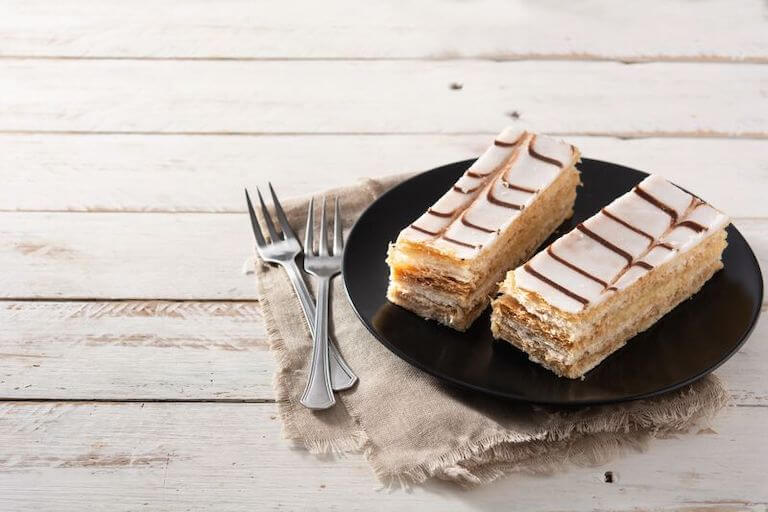
Precision and repetition are essential in pastry work—especially for desserts like mille-feuille, where every layer must be uniform.
In a formal pastry arts program, students may begin this practice in an educational setting rather than in the workplace. Pastry school is the place to make mistakes. You can’t make anything as a professional before you’ve first made it as a beginner.
Is Pastry School the Next Step?
Baking can be a wonderful blend of science and art. People who pursue a career as a pastry chef may have a mind for detail and a heart for creativity. They understand that the foundation of certain recipes—like making consistently good macarons—is based in chemistry.
To skip the science side of the pastry chef’s duties is like skipping the engine when building a car. It may look nice from the outside, but it can all fall apart when you look under the hood.
Escoffier’s baking & pastry arts programs can guide students through both the science of pastry and artistry, giving them the foundations they may need to begin their careers in food.
Ready to get started? Contact our Admissions Department to get details about the program and find out how pastry school could help you start down the path to your goals.
INTERESTED IN LEARNING MORE ABOUT A CAREER AS A PASTRY CHEF? READ THESE NEXT!
- How You Can Get A Job As A Pastry Chef
- Pastry Chef vs. Baker: What’s the Difference?
- The Essential Guide to Careers in Foodservice
This article was originally published on January 22, 2016, and has since been updated.
*Information may not reflect every student’s experience. Results and outcomes may be based on several factors, such as geographical region or previous experience.


